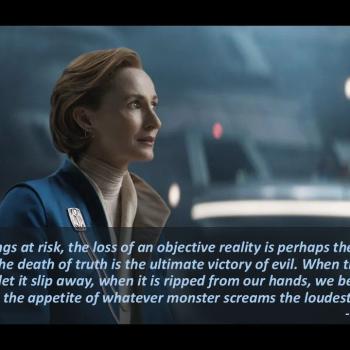 Did the Resurrection Happen?: A Conversation With Gary Habermas and Antony Flew
Did the Resurrection Happen?: A Conversation With Gary Habermas and Antony Flew, edited by David Baggett (Downers Grove: IVP, 2009), offers an excellent presentation of contrasting perspectives on the philosophical aspects of the resurrection, all the more compelling because it takes the form of a dialogue between two philosophers whose different views on the matter are set in the wider context of an ongoing conversation between close friends. While those who have followed the historical investigation of the resurrection will know that there are important issues the volume largely overlooks, a key theme within the book is precisely the need for philosophical as well as historical perspectives on the resurrection, as well as both scientific and philosophical evaluation of recent scientific findings. As someone who has devoted a significant amount of time to though and reflection about historical and theological aspects of the resurrection, I still learned and benefitted from the philosophical discussion recorded in this book.
The book has a somewhat uneven feel, being comprised of a foreword by the Veritas Forum’s executive director, an informal debate (or formal discussion) by Flew and Habermas with input from the moderator as well as questions from the audience, a review by Habermas of Flew’s recent book, and an introduction as well as an ‘assessment’ of the Flew-Habermas debate and an appendix by the book’s editor.
Key points of important background to the book include the fact that this is the third and final installment in an ongoing conversation between two philosophers who have also become friends, and that while Flew’s skepticism about the resurrection has not changed, he recently surprised the world with the announcement that he had come to believe in God. The God whose existence he now accepts is the God posited by Aristotle, and his view is best categorized as Deism.
The discussion between Habermas and Flew does not presuppose inerrancy but approaches the question as a historical one. A set of generally-accepted historical facts is presented, and a key issue in the remainder of the book is whether positing that Jesus was alive after having been dead (1) does best justice to the historical data, and (2) can be a legitimate historical inference.
From a historical perspective there are some issues connected with the ‘basic facts’ that do not get mentioned or are not done justice to, to the detriment of the philosophical discussion built thereupon. The burial of Jesus is said at one point to be largely irrelevant (pp.28-9), and yet even though there is some some acknowledgment that there is less unanimous agreement that the tomb was found empty after 3 days, the empty tomb is appealed to subsequently without such disclaimers. No awareness is shown of the arguments of Brown, Evans and others that Jesus was dishonorably buried (possible implications of which for our thinking about the resurrection I’ve explored elsewhere). And much is made of Jesus’ brother James having been a skeptic, a common view to be sure, but one that can scarcely be assumed by a historian. The Gospels may depict Jesus’ family as unsupportive at times, but we are not told that this attitude persisted until after the crucifixion, and the Gospels themselves depict a divided family (‘three against two and two against three’) as the norm. The extracanonical portrait of James fasting and anticipating seeing Jesus after the crucifixion also needs to be considered. Given the late date scholars assign to both Luke-Acts and John, a historian might also feel unable to assume either that Paul’s experience of seeing Jesus caused his conversion rather than occurring subsequently, just as we would note that any mention of a physical, tangible component is lacking in the earliest accounts of Jesus’ post-Easter appearances. The latter point largely undermines the assumption that group visions in early Christianity were of a fundamentally different character than group visions at Lourdes or Fatima (p.125). This is not to say that we know the sorts of experiences in both examples were the same; we simply don’t know that they were different. We also have no way of knowing whether anyone present when some early Christians claimed to see Jesus themselves failed to see anything (although the two different accounts of what those with Paul on the Damascus Road did or didn’t see or hear in Acts is worth looking at when considering this question).
While there are some historical weaknesses to the book, in terms of the treatment of the philosophical issues, the presentation is top notch. If at times Flew seems to pass up opportunities to respond, this is illustrative of his principled philosophical stance, which feels no need to come up with an extremely probable scenario to explain the rise of Easter faith, since even a relatively unlikely natural scenario is considered more likely than a miraculous one. Interestingly, both sides agree that in most instances a natural explanation is preferable to a miraculous one (see e.g. pp.124,131). The question then becomes whether, if a natural explanation seems to do less justice to the historical data than a supernatural one, one can be justified in concluding that a miracle is the better explanation. Here too both Habermas and Flew seem to agree that believing a miracle occurred may be a perfectly reasonable conclusion for someone with a certain sort of theistic viewpoint, while an atheist may be equally reasonable in considering the evidence less than convincing.
Several times (in the preface as well as on the cover) it is emphasized that the book’s conversation aims at elucidation rather than victory (p.9). This makes the tone of Part III seem somewhat out of place. It is for all intents and purposes a philosophical ‘altar call’ by the book’s editor, purportedly addressed to Flew and yet published as a sort of ‘open letter’. It is almost as though Baggett does not trust either Flew’s demonstrated willingness to ‘follow the evidence where it leads’, nor the long-term Christian witness of Flew’s friend Gary Habermas. This hurried presentation of why Flew ‘should become a Christian’ reflects an all-too-common ‘hard sell’ approach to evangelism that often does more harm than good. And some of the silly apologetic arguments that are used are unworthy of inclusion alongside the much more impressive and sophisticated philosophical conversation between Flew and Habermas. A good example is the old canard that the body could have been produced to disprove the resurrection, as though someone’s remains would have been recognizable after the period of time that may have passed between the crucifixion and the authorities becoming aware of the Christians’ proclamation.
Despite any unevenness, I still highly recommend this book to all those interested in the resurrection from any perspective. For the most part, the book presents in an extremely fair way the basic historical data, which interpretations are so implausible as not to merit serious consideration, and what the key presuppositions are that lead different intelligent people to different conclusions. As such, it helpfully focuses attention on those points where ongoing research, reflection and discussion can most fruitfully take place.
In concluding, it seems to me that a well-informed, intelligent, educated Christian could be perfectly reasonable in believing it more likely than not that Jesus rose from the dead. And the question with which I remain is what role if any such a probabilistic affirmation could possibly have in Christian proclamation. The book’s title asks whether the resurrection happened, and more than once it is asserted in the book that if the answer is no then Christianity is false. And the book makes a reasonable (but not totally decisive) case that Christianity could indeed be true in this sense. But I still find myself torn between the Gospel understood as the proclamation of the historical likelihood of the bodily resurrection of Jesus, and the Christian message as something that can confront and challenge people apart from historical uncertainties. This is the key theological and missiological issue connected with the philosophical issues invesigated in the course of the long-term conversation between Habermas and Flew. Those prepared to grapple with such hard questions will benefit from this volume in all sorts of ways.












